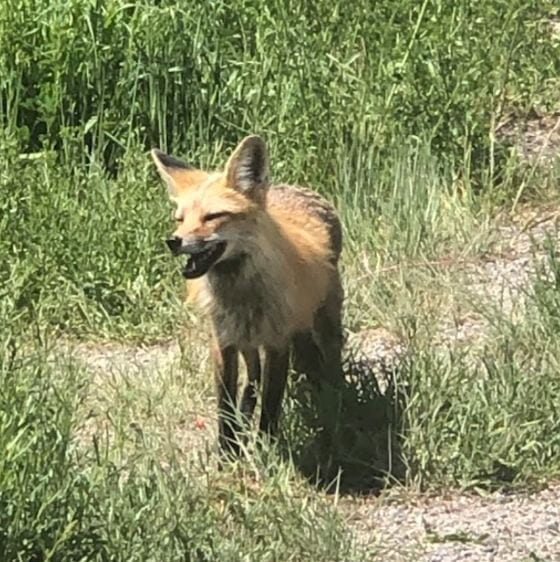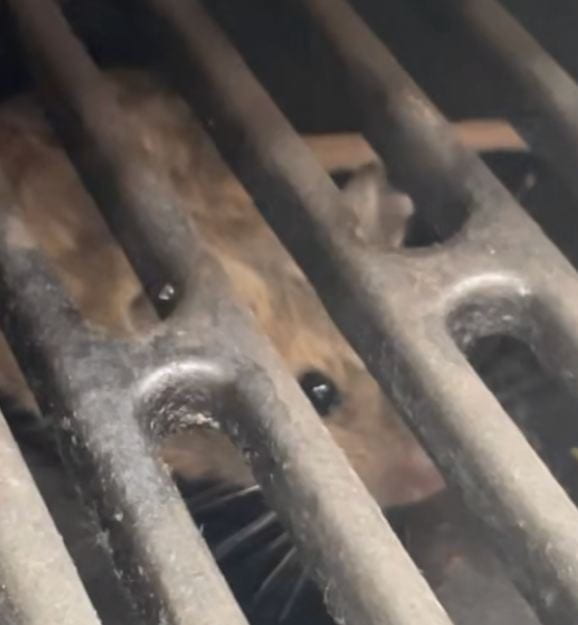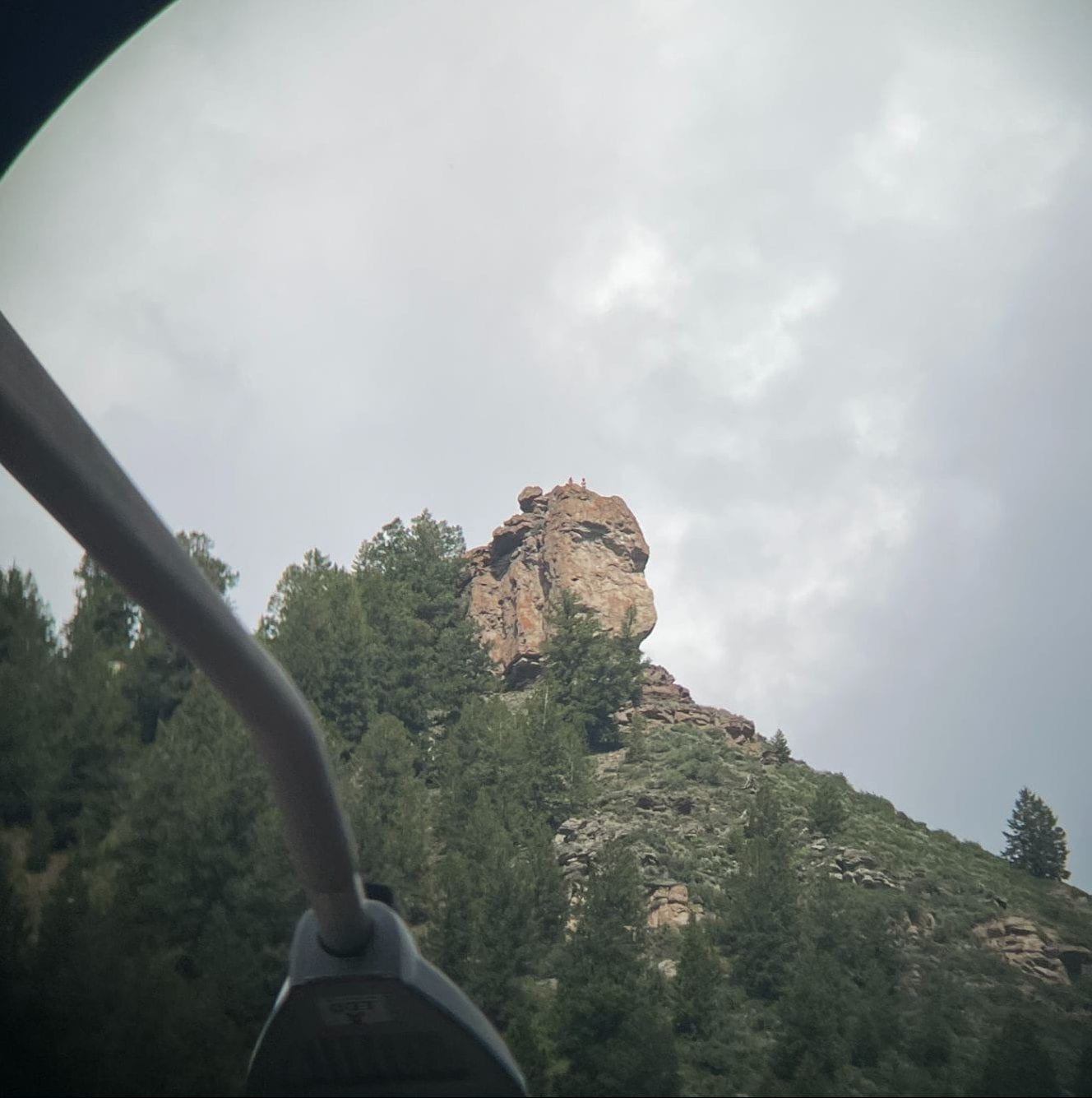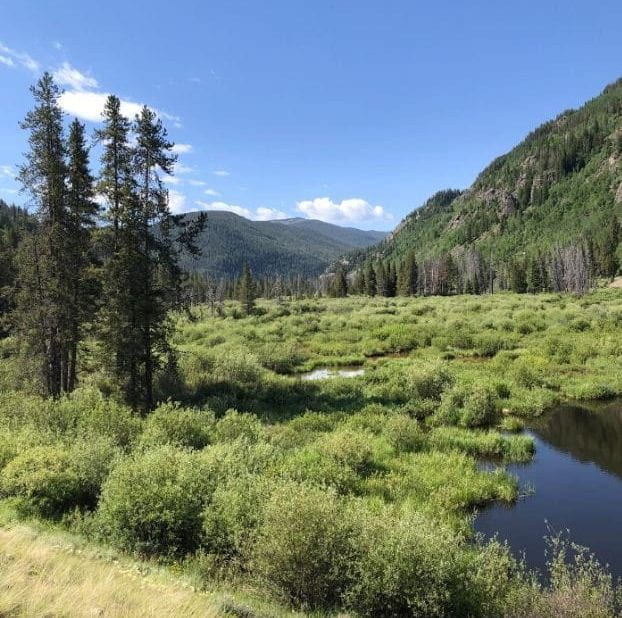
“Beavers are nature’s engineers,” graduate TA Will Larsen explained. As we stood staring into a vast expanse of beaver-created wetlands near the Hornsilver Campground, Will continued to describe the ecosystem services that wetlands provide, from wildfire mitigation (due to high moisture levels) to flood control and carbon sequestration.
In a wetland ecosystem, soils are often anoxic, leading to reduced decomposition rates. Wetlands are also often located in lowland areas, accumulating organic matter from runoff and streams. In the case of the Hornsilver wetlands, which receive snow melt from the neighboring Hornsilver mountain, the transition from a high-energy high-relief environment to a low-relief, slower-moving stream results in the deposition of previously suspended sediments. The coupling of high sediment deposition and low decomposition results in an overall net carbon sink. Human disturbances and wetland destruction, however, can severely limit sequestration rates and disrupt other ecosystem services.
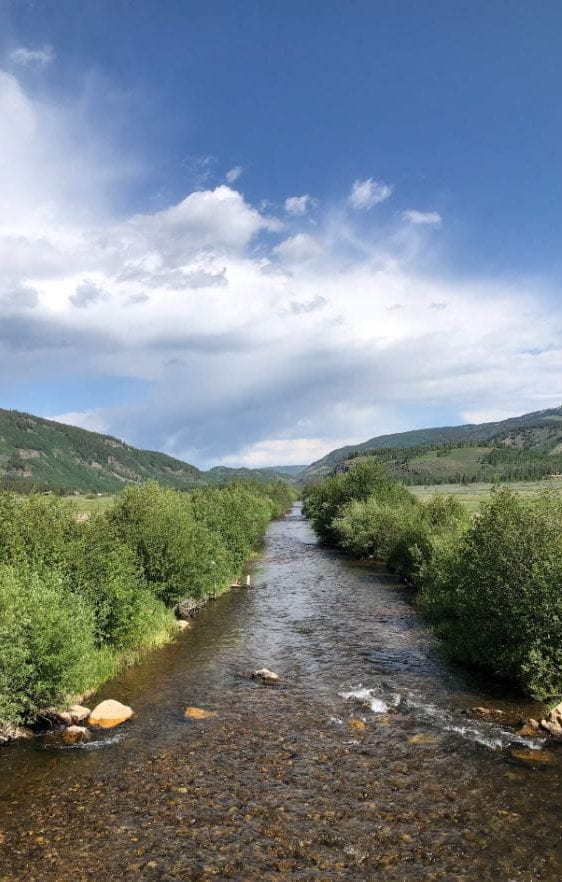
An example of such a disturbance could be observed just seven minutes away at Camp Hale, a decommissioned Army base constructed over eighty years ago. In stark contrast to the heavy meanders of the Eagle River through the wetlands, here, the river had been channelized. Not only did this result in an eerily straight river (which is almost as jarring as the 90-degree angle they created where the Eagle River and Yoder Gulch meet), river channelization limits the river’s contact with the hyporheic zone. This area is especially important since it connects groundwater to river water, provides habitats, and houses many microbial communities that help filter out pollutants.
With all of these issues, why channelize a river at all? The answer is not so simple, but it often comes down to this: meandering rivers are meddlesome.
The gradual movement of a river means that human-made structures, including housing, may eventually face destruction (prompting the advice of one Native American adage, which writes, “Do not live where the snake’s tail whips”). Natural stream courses can also encourage more biodiversity and invite pests or predators that can be dangerous to humans, pets, and/or crops.
Will concluded our discussion with a broader tie-in to the intersection between geosciences and sociology, posing the question: What differentiates a space from a place? In his words (paraphrased), a space becomes a place when we imbue our humanity upon it. For the soldiers of Camp Hale or the vacationers that snowmobile near the post-channelized river banks, the channelization of the Eagle River may be an essential component of the place. For others who knew the river before then, though, channelization may have represented a loss of place. How we consider and evaluate the opposing wants of construction vs. preservation vs. destruction, therefore, is one of the biggest questions we will face moving forward.

Our final stop of the day brought us to an abandoned place, Gilman, Colorado. Once a mining company town founded in the 1880s, the town was eventually abandoned nearly one hundred years later by decree of the Environmental Protection Agency, which declared the area a Superfund site. Today, the town’s old buildings still stand tall next to a pile of tailings nearby, and electricity runs to power water cleanup and containment efforts. Though there have been plans previously to develop the area into another ski resort, such development has since ceased, and what’s to become of Gilman is still unknown.
We returned to our place in Minturn to host a discussion over lunch about water rights and a Fourth of July barbecue/smores roast outside, meeting another furry friend along the way. The night ended with cleaning, packing, and celebrating with stories around the campfire 🙂

Written by Kathryn Phung

